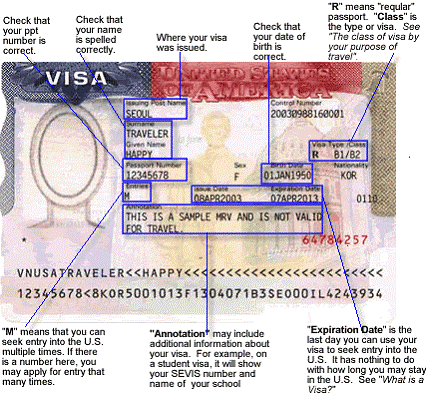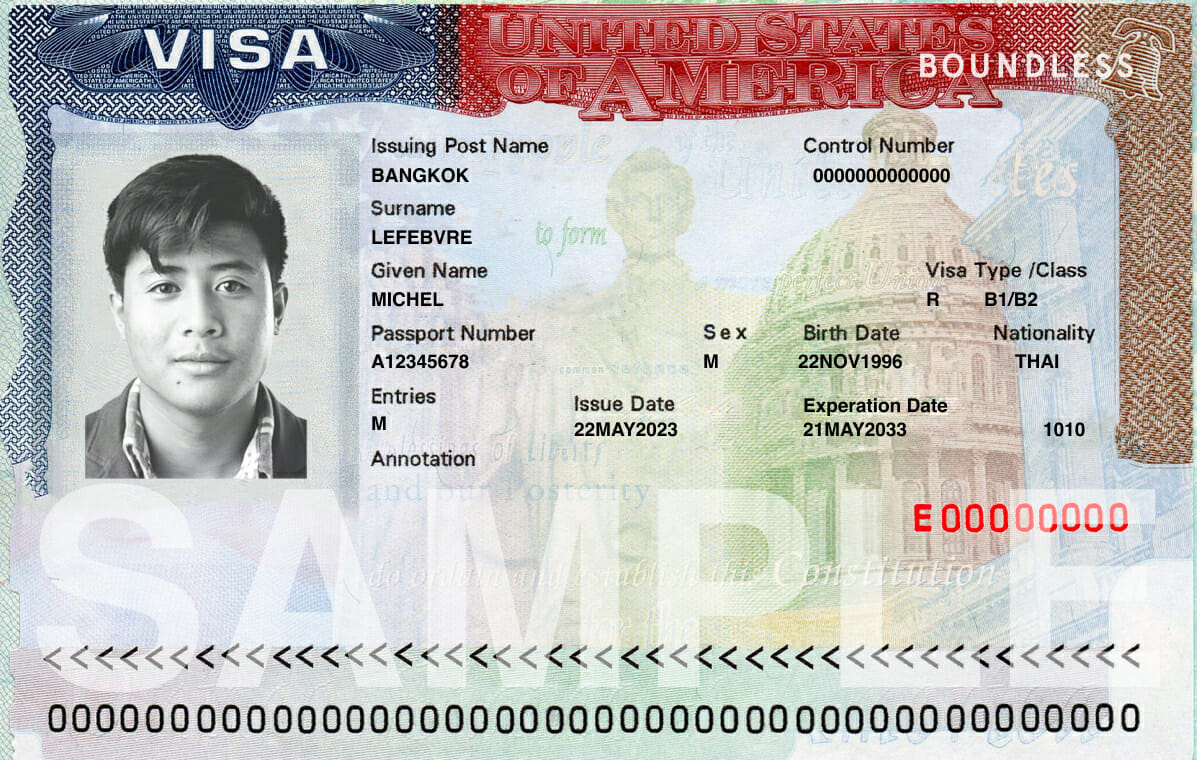Opening Opportunities: Vital Details on US Visas for Indian People
Maneuvering the complexities of U.S. visa options is important for Indian people aiming to discover possibilities in the United States. With numerous categories ranging from short-lived visitor visas to paths for irreversible residency, understanding the subtleties of each can noticeably impact one's journey. This discussion will highlight essential information, including application procedures and qualification standards, that can equip people in their quest of brand-new experiences. As we unbox these essential aspects, the inquiry emerges: what methods can one use to enhance their chances of a successful application?
Overview of US Visa Kind
When traversing the complicated landscape people migration, comprehending the numerous kinds of visas offered is vital for Indian residents seeking access into the USA (US Visas For Indian Citizens). The US immigration system is mainly classified right into two broad classifications: immigrant visas and non-immigrant visas
Immigrant visas are marked for those planning to live permanently in the US. These consist of family-sponsored and employment-based visas, where candidates typically require a sponsor. Non-immigrant visas, on the other hand, accommodate people looking for short-term home, such as visitors, business visitors, and those traveling for details objectives like work or research study.
Within the non-immigrant group, numerous visa types exist, consisting of B-1/ B-2 for service and tourism, H-1B for specialty professions, L-1 for intra-company transferees, and O-1 for people with remarkable abilities. Each visa has distinctive qualification demands and application processes, necessitating detailed study to establish the suitable classification.
Understanding these classifications is vital for Indian residents, as it allows them to browse the application process better, guaranteeing they select the right visa type to fulfill their details needs and purposes. US Visa Requirements.
Student Visa Options
For Indian citizens aspiring to research in the USA, pupil visas provide a crucial path to seek academic chances. The key visa classifications for trainees are the F-1 and M-1 visas.
The F-1 visa is assigned for academic pupils signed up in a full-time program at an approved institution, such as colleges and universities. This visa enables pupils to involve in on-campus employment and, under particular problems, take part in optional functional training (OPT) after finishing their level, offering useful job experience in their field of research.
Conversely, the M-1 visa is planned for employment or non-academic programs. It deals with students seeking technical or professional training, enabling them to enroll in non-degree programs. M-1 visa holders may get involved in sensible training, yet it is usually a lot more minimal compared to the F-1 category.
To obtain a student visa, applicants have to secure admission to a united state organization, get a Type I-20, and show financial ability to sustain their education and living expenses. Comprehending these visa choices is significant for Indian people preparing to commence their educational trip in the United States.
copyright Categories
Many Indian citizens looking for employment possibility in the United States might think about different copyright classifications tailored to various expert demands and credentials. The most popular copyright is the H-1B visa, developed for experienced employees in specialized professions calling for a higher education and learning degree or its equivalent. It enables U.S. employers to momentarily utilize international workers, with a cap on the variety of visas issued every year.
One more vital category is the L-1 visa, which promotes the transfer of staff members within multinational companies. The L-1A visa is for managers and execs, while the L-1B visa is for workers with specialized understanding.
The O-1 visa deals with individuals with remarkable capabilities in their area, including scientific research, arts, or company. For agricultural or seasonal work, the H-2A and H-2B visas are offered, allowing employers to work with foreign employees for momentary positions.
Family-Based Immigration
Family-based migration supplies a path for united state residents and lawful permanent citizens to rejoin with their relatives from India. This migration classification is essential for maintaining domestic bonds and assisting in the combination of family participants into American society. United state citizens can seek for instant relatives, consisting of partners, children, and moms and dads, without facing yearly limits on visas. This expedited procedure significantly lowers waiting times for these close household links.
In contrast, lawful long-term locals might sponsor spouses and single children, however they are subject to yearly caps, leading to longer wait times. The family-sponsored migration system is separated into 2 primary classifications: prompt family members and family members choice classifications. The previous includes those who have a straight partnership with an U.S. resident, while the last incorporates farther family members, such as siblings and married kids of citizens, and children of authorized long-term residents.
For Indian residents seeking family-based migration, understanding the subtleties of this system is critical. Appropriate documentation and adherence to application methods are vital for successful sponsorship. By steering via these complexities, households can work towards reuniting and developing their lives together in the United States.
Long-term Residency Process
The process of getting permanent residency in the USA involves a number of crucial visa classifications customized for Indian people. Understanding the application steps, including necessary documentation and eligibility criteria, is important for a successful outcome. Additionally, prospective applicants should be aware of the expected timeline and details needs linked with each group.
Visa Categories Introduction
While passing through the intricacies of the united state migration system, Indian residents seeking long-term residency should familiarize themselves with different visa classifications tailored to different situations. The primary pathway for irreversible residency is with employment-based visas, which are categorized right into a number of preferences, including EB-1 for people with phenomenal abilities, EB-2 for experts holding advanced degrees, and EB-3 for experienced workers. Each category has specific qualification demands and processing times.

Diversity visas, although limited in number, offer a chance for individuals from underrepresented nations to use for permanent residency through a lottery system. In addition, altruistic options such as asylum and refugee status offer paths for those facing oppression.
Understanding these visa categories is vital for Indian people, as they substantially affect the method for obtaining permanent residency in the USA. Each classification's subtleties and requirements demand mindful factor to consider to align with private circumstances and objectives.
Application Process Steps
Guiding the application procedure for permanent residency in the USA includes numerous key steps that have to be carefully complied with to assure a successful result. The trip usually starts with figuring out the ideal immigration category, such as employment-based or family-sponsored visas. Candidates have to gather necessary documentation, including evidence of qualification, economic declarations, and personal identification.
Once the classification is recognized, the following action is to file the Form I-130 (Request for Alien Family Member) or Kind I-140 (Immigrant Petition for Alien Worker), depending upon the basis of the application. Adhering to the authorization of the application, applicants will certainly require to complete the National Visa Center (NVC) processing by submitting the needed costs and forms.
Next, the applicant should go through a medical exam and obtain authorities clearance certificates. As soon as these are finished, an interview will certainly be set up at the united state consular office or consular office. It is essential to prepare thoroughly for this meeting, as it can substantially influence the choice on the application. Lastly, upon authorization, the candidate will receive their permit, providing them long-term residency in the USA.
Timeline and Requirements
Charting the timeline and demands for getting permanent residency in the United States is essential for Indian people looking for to establish a long-term visibility. The procedure primarily rests on employment-based or family-sponsored pathways, each with particular prerequisites and timelines.
For employment-based immigration, the procedure normally begins with a labor qualification, which can take several months. Once approved, the company files a Form I-140, Immigrant Application for Alien Worker, which can take an added six months to a year, depending on the processing. Following I-140 approval, candidates might require to wait on their priority date to come to be current, which can vary substantially based upon the candidate's classification and native land.
For family-sponsored migration, united state residents can petition for prompt family members, which normally leads to faster handling. However, various other family categories may include much longer wait times as a result of annual caps.
Application Procedures
Comprehending the application treatments for US visas is crucial for Indian residents seeking access right into the United States. US Visas For Indian Citizens. This area will provide an introduction of different visa classifications and describe the detailed procedure for applying. By following these guidelines, applicants can browse the complexities of the visa efficiently
Visa Categories Introduction
Maneuvering the various visa classifications offered to Indian people can be a complicated process, but it is crucial for those seeking to take a trip, work, or research in the United States. The U.S. visa system is categorized mostly right into non-immigrant and immigrant visas, each serving unique functions.
Non-immigrant visas, such as B-1/ B-2 for organization and tourist, F-1 for academic research study, and H-1B for specialized employment, allow temporary remains. Candidates have to demonstrate their intent to return to India after their visit.
In contrast, immigrant visas, including family-sponsored and employment-based classifications, provide a path to irreversible residency. These visas usually require sponsorship from a relative or employer in the united state, together with a rigorous application procedure.

Step-by-Step Refine
Commonly, the application process for U.S. visas entails a number of crucial steps that applicants must carefully comply with to ensure a smooth experience. The first action is to figure out the suitable visa group based upon the objective of traveling, such as job, research study, or tourist. When the category is determined, candidates need to complete the on-line DS-160 form, supplying exact individual info and traveling details.
After sending the DS-160, applicants ought to pay the visa fee, which varies by visa kind. Next off, schedule a consultation for a visa interview at the nearest united state Embassy or Consular Office. US Visas For Indian Citizens. It is vital to plan for the interview by event required documents, consisting of a valid ticket, visa confirmation, cost payment receipt, and any type of sustaining paperwork particular to the visa group
On the day of the meeting, get here punctually and dress suitably. Throughout the interview, be prepared to answer questions regarding your traveling purposes, economic stability, and ties to India. If approved, the visa will certainly be stamped in the copyright, enabling for traveling to the United States. Complying with these actions guarantees an efficient and reliable copyright procedure for Indian residents.
Tips for a Successful Application

Make certain that all check here forms are finished precisely and truthfully. Tiny errors or noninclusions can result in delays or even rejections. It is suggested to collect all needed sustaining documents, consisting of economic declarations, employment letters, and proof of ties to India, which show your intent to return post-visit.
Get ready for your visa interview by practicing feedbacks to usual inquiries connected to your travel strategies and history - Types Of US Visas. Self-confidence and clarity can substantially influence the policeman's impact. Think about seeking assistance from reliable migration consultants if you feel overwhelmed.
Often Asked Concerns
What Are the Handling Times for US Visa Applications?
Handling times for united state visa can differ significantly based on the visa kind, application volume, and the candidate's location - Types Of US Visas. Usually, applicants should expect a handling period varying from a couple of weeks to a number of months
Can I Change My Visa Condition While in the US?
Yes, people can transform their visa condition while in the USA, given they meet eligibility demands and follow correct treatments. It is important to file the appropriate application with U.S. Citizenship and Migration Solutions (USCIS)
Exist Age Purview for US Visa Candidates?
There are typically no certain age limits for U.S. visa applicants; however, certain visa groups may have age-related qualification standards. It's essential to assess the needs for every visa type to assure compliance.
What Are Common Factors copyright Denial?
Common reasons copyright rejection consist of not enough economic sources, failure to demonstrate ties to the home country, incomplete application, lack of proper paperwork, previous immigration offenses, and failing to fulfill qualification requirements for the particular visa classification.
Just How Can I Appeal a Visa Denial Choice?
To appeal a visa denial, review the consular officer's reasons, collect supporting documents, and submit a formal interest the ideal authority, ensuring to stick to defined timelines and step-by-step demands for the appeal procedure.